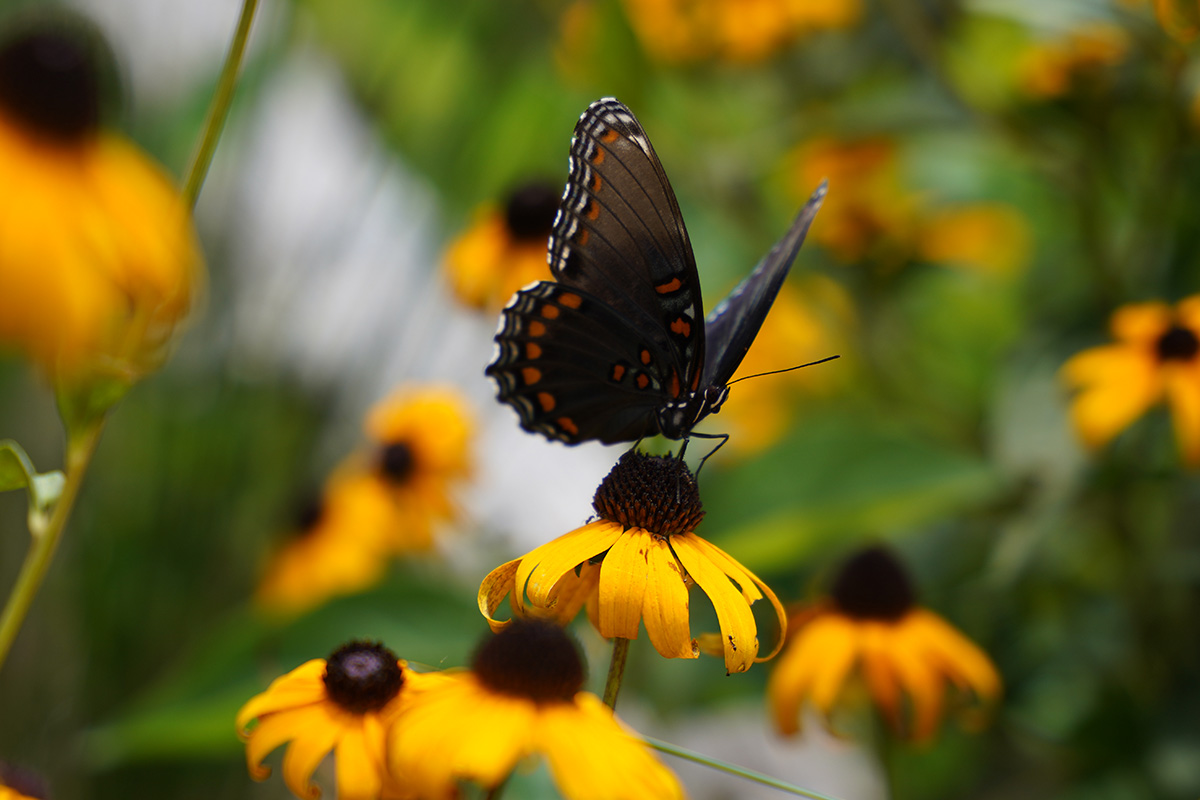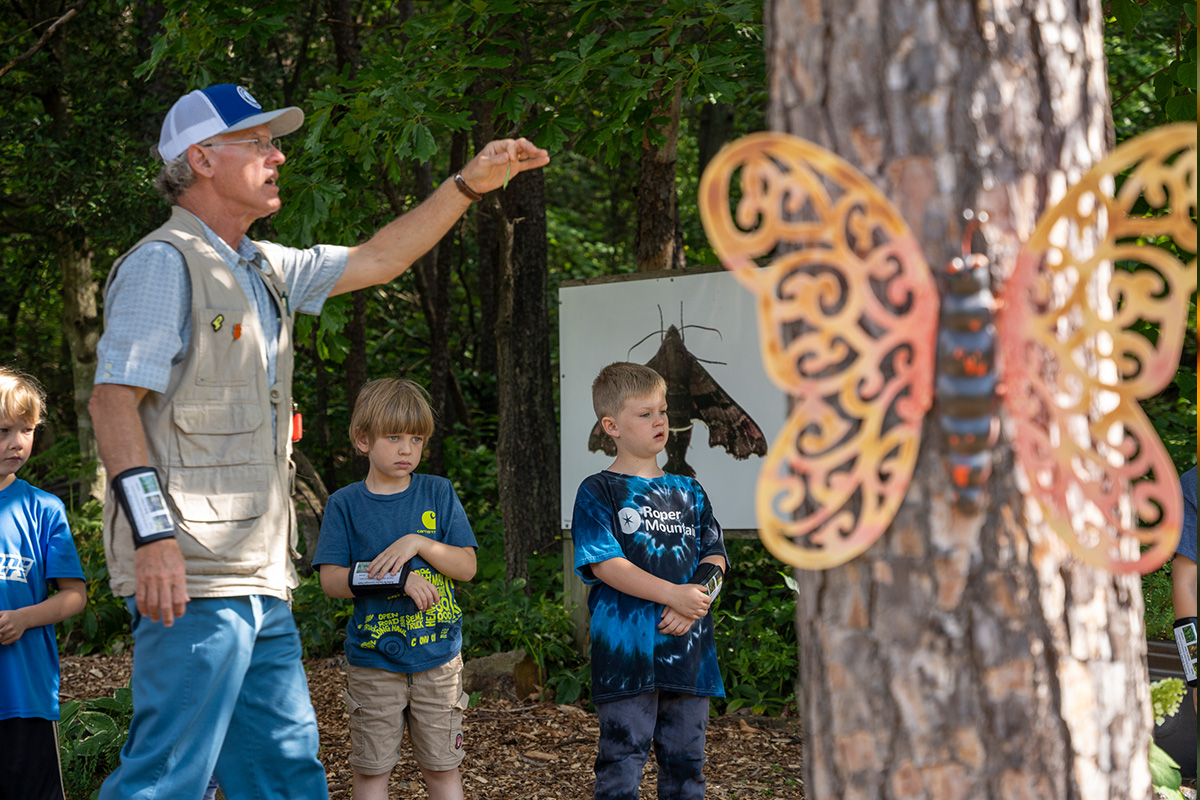As part of Greenville County Schools, the Butterfly Garden is open to the public only during special events and Afternoon Explorations.
The butterfly garden, near the pond and adjacent to the Harrison Hall of Natural Science is a joint project of the Roper Mountain Science Center and the Greater Greenville Master Gardeners. It contains many varieties of plants that attract butterflies and bees, and is lovely during each season of the year. The Greater Greenville Master Gardeners help to maintain the butterfly garden. In 2002, it was certified a National Wildlife Federation Schoolyard Habitat. This certification means that wildlife is provided food, shelter, water and a place to raise the young on these grounds.
Visitors may stroll through the butterfly garden as part of admission during our Summer Adventure or with tickets to Afternoon Explorations September-May. Students on field trips enjoy it as part of lessons during the school year.
What is a Butterfly Garden?
A butterfly garden is simply a garden with plant material that attracts butterflies. The general needs of butterflies are host plants and nectar plants. Host plants are the plants eaten by the caterpillar or larva of the butterfly. Each species of butterfly has a specific plant that the adult butterfly lays her eggs on and which the caterpillar will eat. Nectar plants are the food of the adult butterfly. They use a proboscis to sip nectar from the flowers of the plant. A butterfly garden also needs protection from the wind. Many butterflies like a damp spot or mud hole for puddling. Finally, butterflies like sunny areas and some rocks to rest on and soak up the sun.
Nectar plants include these butterfly magnets:
- ‘Miss Huff’ Lantana
- Butterfly Bush or Buddleia davidii
- Verbena banariensis
- Phlox
- Purple Coneflower of Echinacea pupurea
- Butterfly weed or Asclepiastuberosa
- Aster
- Zinnia
Host plants are the most important plants in the garden. Below is a list of common butterflies in our area and their host plant.
| Butterfly | Host Plant |
|---|---|
| American lady | Anaphalis, cudweed, Antennaria |
| Black swallowtail | Fennel, parsley, rue, dill, Queen Ann’s Lace |
| Buckeye | Snapdragon, plantain, Linaria, Verbena |
| Cabbage white | Cabbage, Cleome, Nasturtium, mustard, Lunaria |
| Cloudless sulphur | Senna, Cassia, clover |
| Eastern Tailed Blue | legume family, clover, alfalfa |
| Falcate orange-tip | mustard family |
| Giant swallowtail | prickly ash, rue, citrus, hop trees |
| Gray hairstreak | mallow, hollyhock, legumes |
| Great spangled fritillary | violet |
| Great purple hairstreak | mistletoe |
| Gulf fritillary | passion-vine |
| Long tailed skipper | legumes (pole bean, garden bean), wisteria |
| Monarch | Asclepias species (milkweed) |
| Mourning cloak | willow, poplar, elm, nettle |
| Painted lady | thistle, hollyhock |
| Pearl crescent | aster |
| Pipevine swallowtail | Aristolochia (pipevine), wild Ginger |
| Question Mark | hops, hackberry, nettle, elm |
| Red Admiral | nettle |
| Red-spotted purple | willow, poplar, plum, apple, aspen, cherry |
| Silver spotted skipper | locust, wisteria |
| Sleepy Orange | Cassia, senna, clover |
| Spicebush swallowtail | Lindera benzoin (spicebush), sassafras |
| Spring azure | dogwood blossoms, Viburnum, blueberry |
| Tiger swallowtail | wild cherry, poplar, willow, birch |
| Variegated fritillary | passion vine, violet |
| Zebra swallowtail | Asimina (paw paw) |
To see pictures and learn more about butterflies in our area, click on “Butterflies of North America” located at www.npwrc.usgs.gov. This site allows you to click on your state, and tells you what butterflies are there, and even narrows it down to the butterflies in your county.
We are very proud of our butterfly garden at Roper Mountain Science Center. Not only do we have beautiful flowers, but we have beautiful “flying flowers.”





